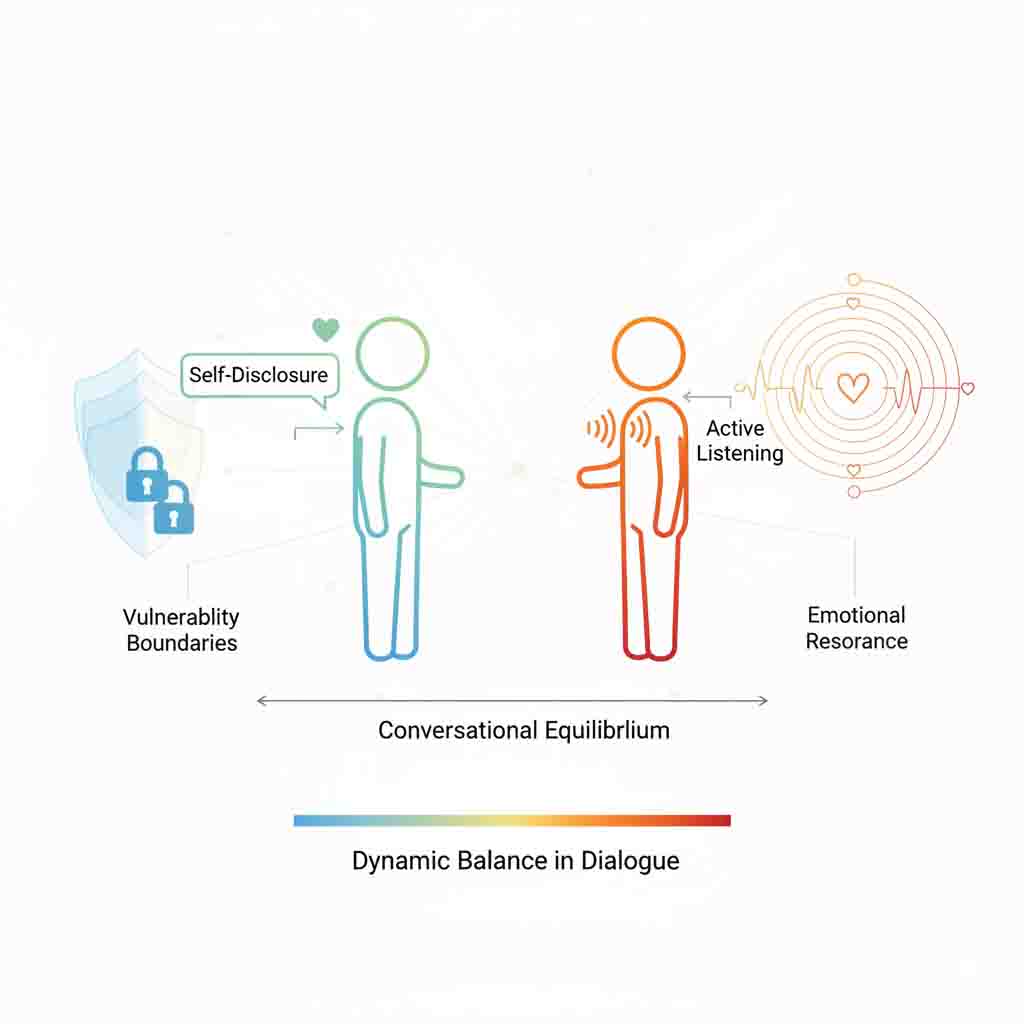Table of Contents
-
Understanding Authentic Connection
1. Understanding Authentic Connection
Authentic connection represents more than mere social interaction – it’s the profound experience of being truly seen, heard, and understood by another person. Unlike casual acquaintanceships, authentic connections create a shared space where vulnerability meets acceptance.
Research from the University of California shows that genuine social connections can reduce stress levels by up to 26% and increase life satisfaction by 23%. This isn’t about networking or social climbing; it’s about creating bonds that nourish both parties emotionally and psychologically.
Q: How can I distinguish between an authentic connection and a superficial one?
A: Authentic connections leave you feeling energized rather than drained, involve mutual vulnerability, and withstand periods of silence or disagreement without discomfort.
2. The Psychology Behind Human Bonding
Human connection operates through three primary psychological mechanisms: mirror neurons that help us empathize, oxytocin release that builds trust, and shared narrative formation that creates collective meaning.
Dr. Barbara Fredrickson’s research at UNC Chapel Hill demonstrates that “micro-moments of connection” – brief, positive interactions lasting just 3-4 seconds – cumulatively build our capacity for deeper relationships. These moments create what she terms “positivity resonance,” where brains synchronize and emotions align.
Q: Can you develop better connection skills if you’re naturally introverted?
A: Absolutely. Connection skills are learnable behaviors. Introverts often excel at deep, one-on-one connections where their natural listening abilities and thoughtfulness create ideal conditions for authenticity.
3. The Four Pillars of Genuine Connection
Presence
True connection requires full attention. This means setting aside devices, quieting internal mental chatter, and focusing completely on the interaction. Presence signals value and respect to the other person.
Vulnerability
As Dr. Brené Brown’s research clarifies, vulnerability is the cornerstone of intimacy. This involves sharing appropriate personal experiences, admitting uncertainties, and expressing genuine emotions rather than projecting perfection.
Curiosity
Genuine interest in others’ experiences and perspectives fosters connection. Ask open-ended questions, seek to understand rather than judge, and explore differences with respectful fascination.
Reciprocity
Healthy connections involve balanced giving and receiving. This doesn’t mean immediate tit-for-tat but rather a general equilibrium where both parties feel valued and supported over time.
Q: How do you know when you’re being appropriately vulnerable?
A: Appropriate vulnerability shares real feelings and experiences while maintaining personal boundaries. It shouldn’t leave you feeling exposed or regretful, nor overwhelm the listener.

4. Step-by-Step Connection Building Process
Phase 1: Foundation Building (Weeks 1-2)
Start with developing self-awareness through journaling about your connection patterns and values. Practice daily presence exercises like mindful listening during routine interactions.
Phase 2: Skill Development (Weeks 3-6)
Implement the “Three Question Rule”: in conversations, ask at least three open-ended questions before sharing your own perspective. Practice “reflective listening” by paraphrasing what you’ve heard before responding.
Phase 3: Integration (Weeks 7-8)
Initiate one meaningful conversation weekly where you share something personally significant. Join a group or activity aligned with your interests to practice new skills in a low-pressure environment.
Phase 4: Deepening (Ongoing)
Regularly assess your relationships for balance and satisfaction. Schedule “connection check-ins” with important people in your life to discuss the relationship itself.
Q: What if I try to connect more deeply and people seem uncomfortable?
A: Proceed gradually. Start with lower-risk sharing and observe responses. Respect others’ boundaries while gently expanding your own comfort zone.
5. Common Connection Pitfalls and Solutions
Perfection Projection
Many people hide imperfections, believing they must appear “together” to be liked. Solution: Practice sharing small struggles or uncertainties with trusted individuals.
Transactional Thinking
Approaching relationships as exchanges of favors or support. Solution: Focus on connection as an end in itself rather than a means to an end.
Over-Reliance on Digital Communication
Texts and social media lack nonverbal cues essential for deep connection. Solution: Prioritize voice or video calls for meaningful conversations and in-person meetings when possible.
Fear of Rejection
Avoiding vulnerability to prevent potential hurt. Solution: Reframe rejection as incompatibility rather than personal failure.
Q: How can I recover from a failed attempt at deeper connection?
A: Acknowledge the discomfort without dwelling on it. Remember that not every connection attempt will succeed, and each effort builds your skills for future interactions.
6. Maintaining and Deepening Relationships
Authentic connections require ongoing attention and nurturing. Schedule regular check-ins with important people in your life. Practice “active appreciation” by specifically noting what you value about the person and the relationship.
Research from the Gottman Institute shows that successful long-term relationships maintain a 5:1 ratio of positive to negative interactions. This doesn’t mean avoiding conflict, but ensuring positive moments significantly outweigh difficult ones.
Remember that relationships naturally evolve, and depth develops over time through shared experiences, weathered challenges, and consistent mutual support.
Q: How do you know when to invest more in a connection versus stepping back?
A: Invest more when there’s mutual effort, respect for boundaries, and the relationship adds meaning to your life. Step back when you consistently feel drained, disrespected, or your boundaries are repeatedly crossed.



